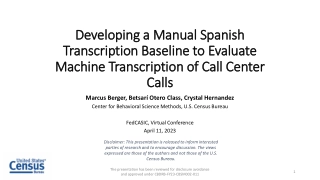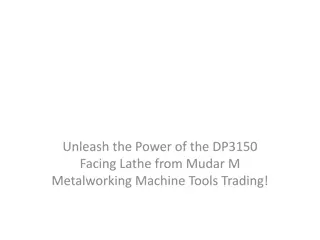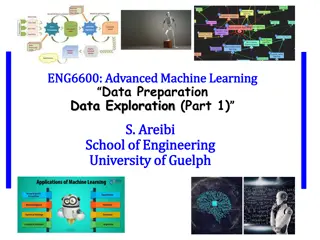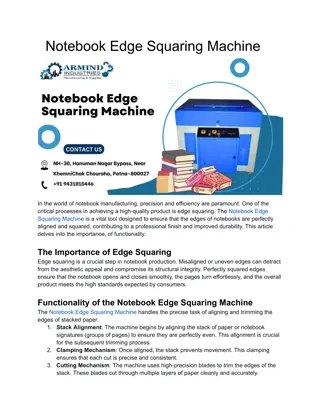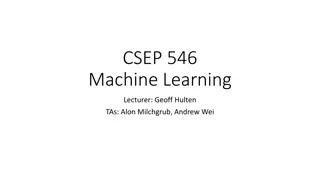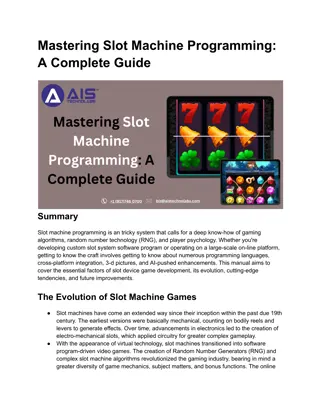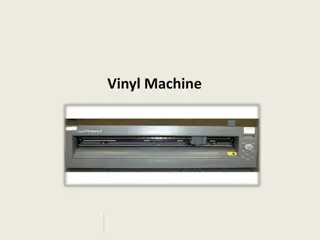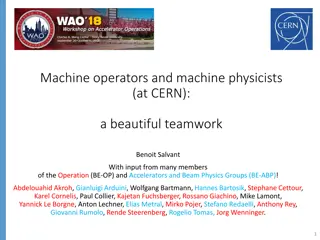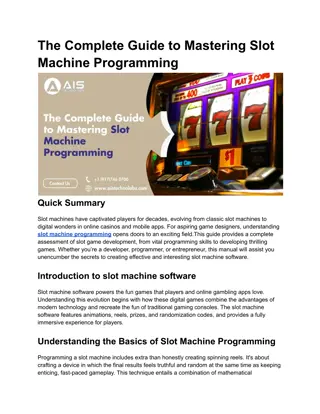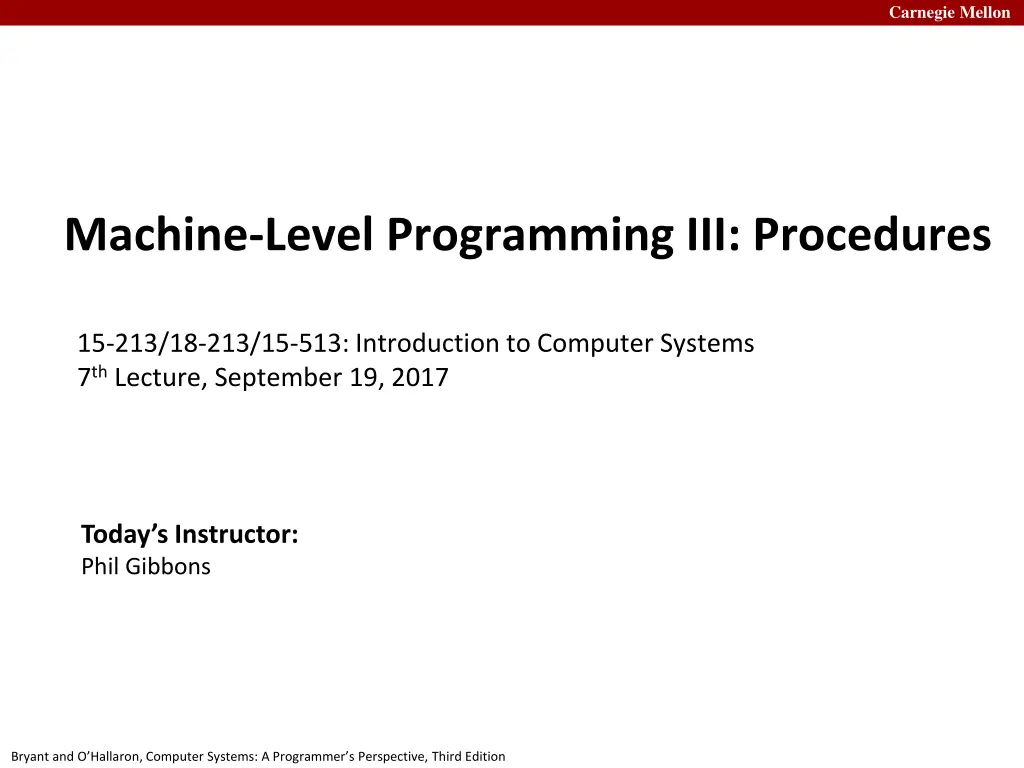
Carnegie Mellon Machine-Level Programming Procedures and Mechanisms
Explore computer systems through Carnegie Mellon's lecture on machine-level programming procedures, including stack structure, calling conventions, data passing, and memory management illustrated with recursion. Learn about x86-64 implementation of procedures and the mechanisms involved in procedure execution.
Download Presentation

Please find below an Image/Link to download the presentation.
The content on the website is provided AS IS for your information and personal use only. It may not be sold, licensed, or shared on other websites without obtaining consent from the author. If you encounter any issues during the download, it is possible that the publisher has removed the file from their server.
You are allowed to download the files provided on this website for personal or commercial use, subject to the condition that they are used lawfully. All files are the property of their respective owners.
The content on the website is provided AS IS for your information and personal use only. It may not be sold, licensed, or shared on other websites without obtaining consent from the author.
E N D
Presentation Transcript
Carnegie Mellon Machine-Level Programming III: Procedures 15-213/18-213/15-513: Introduction to Computer Systems 7th Lecture, September 19, 2017 Today s Instructor: Phil Gibbons Bryant and O Hallaron, Computer Systems: A Programmer s Perspective, Third Edition
Carnegie Mellon Today Procedures Mechanisms Stack Structure Calling Conventions Passing control Passing data Managing local data Illustration of Recursion 2 Bryant and O Hallaron, Computer Systems: A Programmer s Perspective, Third Edition
Carnegie Mellon Mechanisms in Procedures P( ) { y = Q(x); print(y) } Passing control To beginning of procedure code Back to return point Passing data Procedure arguments Return value int Q(int i) { int t = 3*i; int v[10]; return v[t]; } Memory management Allocate during procedure execution Deallocate upon return Mechanisms all implemented with machine instructions x86-64 implementation of a procedure uses only those mechanisms required 3 Bryant and O Hallaron, Computer Systems: A Programmer s Perspective, Third Edition
Carnegie Mellon Mechanisms in Procedures P( ) { y = Q(x); print(y) } Passing control To beginning of procedure code Back to return point Passing data Procedure arguments Return value int Q(int i) { int t = 3*i; int v[10]; return v[t]; } Memory management Allocate during procedure execution Deallocate upon return Mechanisms all implemented with machine instructions x86-64 implementation of a procedure uses only those mechanisms required 4 Bryant and O Hallaron, Computer Systems: A Programmer s Perspective, Third Edition
Carnegie Mellon Mechanisms in Procedures P( ) { y = Q(x); print(y) } Passing control To beginning of procedure code Back to return point Passing data Procedure arguments Return value int Q(int i) { int t = 3*i; int v[10]; return v[t]; } Memory management Allocate during procedure execution Deallocate upon return Mechanisms all implemented with machine instructions x86-64 implementation of a procedure uses only those mechanisms required 5 Bryant and O Hallaron, Computer Systems: A Programmer s Perspective, Third Edition
Carnegie Mellon Mechanisms in Procedures P( ) { y = Q(x); print(y) } Passing control To beginning of procedure code Back to return point Passing data Procedure arguments Return value int Q(int i) { int t = 3*i; int v[10]; return v[t]; } Memory management Allocate during procedure execution Deallocate upon return Mechanisms all implemented with machine instructions x86-64 implementation of a procedure uses only those mechanisms required 6 Bryant and O Hallaron, Computer Systems: A Programmer s Perspective, Third Edition
Carnegie Mellon Mechanisms in Procedures P( ) { y = Q(x); print(y) } Passing control To beginning of procedure code Back to return point mechanisms, but the choices are determined by designers. These choices make up the Application Binary Interface (ABI). Machine instructions implement the Passing data Procedure arguments Return value int Q(int i) { int t = 3*i; int v[10]; return v[t]; } Memory management Allocate during procedure execution Deallocate upon return Mechanisms all implemented with machine instructions x86-64 implementation of a procedure uses only those mechanisms required 7 Bryant and O Hallaron, Computer Systems: A Programmer s Perspective, Third Edition
Carnegie Mellon Today Procedures Mechanisms Stack Structure Calling Conventions Passing control Passing data Managing local data Illustration of Recursion 8 Bryant and O Hallaron, Computer Systems: A Programmer s Perspective, Third Edition
Carnegie Mellon Carnegie Mellon x86-64 Stack Region of memory managed with stack discipline stack m e m o r y Memory viewed as array of bytes. Different regions have different purposes. (Like ABI, a policy decision) code 9 Bryant and O Hallaron, Computer Systems: A Programmer s Perspective, Third Edition
Carnegie Mellon Carnegie Mellon x86-64 Stack Stack Bottom Region of memory managed with stack discipline stack code Stack Pointer: %rsp Stack Top 10 Bryant and O Hallaron, Computer Systems: A Programmer s Perspective, Third Edition
Carnegie Mellon x86-64 Stack Region of memory managed with stack discipline Stack Bottom Grows toward lower addresses Increasing Addresses Register %rsp contains lowest stack address address of top element Stack Grows Down Stack Pointer: %rsp Stack Top 11 Bryant and O Hallaron, Computer Systems: A Programmer s Perspective, Third Edition
Carnegie Mellon x86-64 Stack: Push pushq Src Fetch operand at Src Decrement %rsp by 8 Write operand at address given by %rsp Src Stack Bottom val Increasing Addresses Stack Grows Down Stack Pointer: %rsp Stack Top 12 Bryant and O Hallaron, Computer Systems: A Programmer s Perspective, Third Edition
Carnegie Mellon x86-64 Stack: Push pushq Src Fetch operand at Src Decrement %rsp by 8 Write operand at address given by %rsp Src Stack Bottom val Increasing Addresses Stack Grows Down Stack Pointer: %rsp -8 Stack Top 13 Bryant and O Hallaron, Computer Systems: A Programmer s Perspective, Third Edition
Carnegie Mellon Carnegie Mellon x86-64 Stack: Pop popq Dest Read value at address given by %rsp Increment %rsp by 8 Store value at Dest (usually a register) Dest Stack Bottom Increasing Addresses Stack Grows Down Stack Pointer: %rsp val Stack Top 14 Bryant and O Hallaron, Computer Systems: A Programmer s Perspective, Third Edition
Carnegie Mellon x86-64 Stack: Pop popq Dest Read value at address given by %rsp Increment %rsp by 8 Store value at Dest (usually a register) Dest Stack Bottom Increasing Addresses val Stack Grows Down +8 Stack Pointer: %rsp Stack Top 15 Bryant and O Hallaron, Computer Systems: A Programmer s Perspective, Third Edition
Carnegie Mellon x86-64 Stack: Pop popq Dest Read value at address given by %rsp Increment %rsp by 8 Store value at Dest (usually a register) Dest Stack Bottom Increasing Addresses Stack Grows Down Stack Pointer: %rsp val Stack Top (The memory doesn t change, only the value of %rsp) 16 Bryant and O Hallaron, Computer Systems: A Programmer s Perspective, Third Edition
Carnegie Mellon Today Procedures Mechanisms Stack Structure Calling Conventions Passing control Passing data Managing local data Illustration of Recursion 17 Bryant and O Hallaron, Computer Systems: A Programmer s Perspective, Third Edition
Carnegie Mellon Code Examples void multstore(long x, long y, long *dest) { long t = mult2(x, y); *dest = t; } 0000000000400540 <multstore>: 400540: push %rbx 400541: mov %rdx,%rbx 400544: callq 400550 <mult2> 400549: mov %rax,(%rbx) 40054c: pop %rbx 40054d: retq # Save %rbx # Save dest # mult2(x,y) # Save at dest # Restore %rbx # Return long mult2(long a, long b) { long s = a * b; return s; } 0000000000400550 <mult2>: 400550: mov %rdi,%rax 400553: imul %rsi,%rax 400557: retq # a # a * b # Return 18 Bryant and O Hallaron, Computer Systems: A Programmer s Perspective, Third Edition
Carnegie Mellon Procedure Control Flow Use stack to support procedure call and return Procedure call: call label Push return address on stack Jump to label Return address: Address of the next instruction right after call Example from disassembly Procedure return: ret Pop address from stack Jump to address 19 Bryant and O Hallaron, Computer Systems: A Programmer s Perspective, Third Edition
Carnegie Mellon Control Flow Example #1 0x130 0000000000400540 <multstore>: 400544: callq 400550 <mult2> 400549: mov %rax,(%rbx) 0x128 0x120 %rsp 0x120 %rip 0x400544 0000000000400550 <mult2>: 400550: mov %rdi,%rax 400557: retq 20 Bryant and O Hallaron, Computer Systems: A Programmer s Perspective, Third Edition
Carnegie Mellon Control Flow Example #2 0x130 0000000000400540 <multstore>: 400544: callq 400550 <mult2> 400549: mov %rax,(%rbx) 0x128 0x120 0x118 0x400549 %rsp 0x118 %rip 0x400550 0000000000400550 <mult2>: 400550: mov %rdi,%rax 400557: retq 21 Bryant and O Hallaron, Computer Systems: A Programmer s Perspective, Third Edition
Carnegie Mellon Control Flow Example #3 0x130 0000000000400540 <multstore>: 400544: callq 400550 <mult2> 400549: mov %rax,(%rbx) 0x128 0x120 0x118 0x400549 %rsp 0x118 %rip 0x400557 0000000000400550 <mult2>: 400550: mov %rdi,%rax 400557: retq 22 Bryant and O Hallaron, Computer Systems: A Programmer s Perspective, Third Edition
Carnegie Mellon Control Flow Example #4 0x130 0000000000400540 <multstore>: 400544: callq 400550 <mult2> 400549: mov %rax,(%rbx) 0x128 0x120 %rsp 0x120 %rip 0x400549 0000000000400550 <mult2>: 400550: mov %rdi,%rax 400557: retq 23 Bryant and O Hallaron, Computer Systems: A Programmer s Perspective, Third Edition
Carnegie Mellon Today Procedures Mechanisms tack Structure Calling Conventions Passing control Passing data Managing local data Illustrations of Recursion & Pointers 24 Bryant and O Hallaron, Computer Systems: A Programmer s Perspective, Third Edition
Carnegie Mellon Procedure Data Flow Registers Stack First 6 arguments %rdi %rsi Arg n %rdx %rcx %r8 Arg 8 %r9 Arg 7 Return value %rax Only allocate stack space when needed 25 Bryant and O Hallaron, Computer Systems: A Programmer s Perspective, Third Edition
Carnegie Mellon void multstore (long x, long y, long *dest) { long t = mult2(x, y); *dest = t; } Data Flow Examples 0000000000400540 <multstore>: # x in %rdi, y in %rsi, dest in %rdx 400541: mov %rdx,%rbx 400544: callq 400550 <mult2> # t in %rax 400549: mov %rax,(%rbx) # Save dest # mult2(x,y) # Save at dest long mult2 (long a, long b) { long s = a * b; return s; } 0000000000400550 <mult2>: # a in %rdi, b in %rsi 400550: mov %rdi,%rax 400553: imul %rsi,%rax # s in %rax 400557: retq # a # a * b # Return 26 Bryant and O Hallaron, Computer Systems: A Programmer s Perspective, Third Edition
Carnegie Mellon Today Procedures Mechanisms Stack Structure Calling Conventions Passing control Passing data Managing local data Illustration of Recursion 27 Bryant and O Hallaron, Computer Systems: A Programmer s Perspective, Third Edition
Carnegie Mellon Stack-Based Languages Languages that support recursion e.g., C, Pascal, Java Code must be Reentrant Multiple simultaneous instantiations of single procedure Need some place to store state of each instantiation Arguments Local variables Return pointer Stack discipline State for given procedure needed for limited time From when called to when return Callee returns before caller does Stack allocated in Frames state for single procedure instantiation Frames 28 Bryant and O Hallaron, Computer Systems: A Programmer s Perspective, Third Edition
Carnegie Mellon Call Chain Example Example Call Chain yoo( ) { who(); } yoo who( ) { amI(); amI(); } who amI amI amI( ) { amI(); } amI amI Procedure amI() is recursive 29 Bryant and O Hallaron, Computer Systems: A Programmer s Perspective, Third Edition
Carnegie Mellon Stack Frames Previous Frame Contents Return information Local storage (if needed) Temporary space (if needed) Frame Pointer: %rbp (Optional) x Frame for proc Stack Pointer: %rsp Management Space allocated when enter procedure Stack Top Set-up code Includes push by call instruction Deallocated when return Finish code Includes pop by ret instruction 30 Bryant and O Hallaron, Computer Systems: A Programmer s Perspective, Third Edition
Carnegie Mellon Stack Example yoo yoo( ) { who(); } %rbp yoo yoo who %rsp amI amI amI amI 31 Bryant and O Hallaron, Computer Systems: A Programmer s Perspective, Third Edition
Carnegie Mellon Stack Example yoo yoo( ) { who(); } } who( ) { amI(); amI(); yoo yoo who %rbp who amI amI %rsp amI amI 32 Bryant and O Hallaron, Computer Systems: A Programmer s Perspective, Third Edition
Carnegie Mellon Stack Example yoo yoo( ) { who(); } } } who( ) { amI(); amI(); amI(); yoo yoo amI( ) { who who amI amI %rbp amI amI %rsp amI 33 Bryant and O Hallaron, Computer Systems: A Programmer s Perspective, Third Edition
Carnegie Mellon Stack Example yoo yoo( ) { who(); } } } who( ) { amI(); amI(); amI(); yoo yoo amI( ) { who amI( ) { amI(); } who amI amI amI amI %rbp amI amI %rsp 34 Bryant and O Hallaron, Computer Systems: A Programmer s Perspective, Third Edition
Carnegie Mellon Stack Example yoo yoo( ) { who(); } } } who( ) { amI(); amI(); amI(); yoo yoo amI( ) { who amI( ) { amI(); } } who amI amI amI( ) { amI(); amI amI amI amI %rbp amI %rsp 35 Bryant and O Hallaron, Computer Systems: A Programmer s Perspective, Third Edition
Carnegie Mellon Stack Example yoo yoo( ) { who(); } } } who( ) { amI(); amI(); amI(); yoo yoo amI( ) { who amI( ) { amI(); } who amI amI amI amI %rbp amI amI %rsp 36 Bryant and O Hallaron, Computer Systems: A Programmer s Perspective, Third Edition
Carnegie Mellon Stack Example yoo yoo( ) { who(); } } } who( ) { amI(); amI(); amI(); yoo yoo amI( ) { who who amI amI %rbp amI amI %rsp amI 37 Bryant and O Hallaron, Computer Systems: A Programmer s Perspective, Third Edition
Carnegie Mellon Stack Example yoo yoo( ) { who(); } } who( ) { amI(); amI(); yoo yoo who %rbp who amI amI %rsp amI amI 38 Bryant and O Hallaron, Computer Systems: A Programmer s Perspective, Third Edition
Carnegie Mellon Stack Example yoo yoo( ) { who(); } } } who( ) { amI(); amI(); amI(); yoo yoo amI( ) { who who amI amI %rbp amI amI %rsp amI 39 Bryant and O Hallaron, Computer Systems: A Programmer s Perspective, Third Edition
Carnegie Mellon Stack Example yoo yoo( ) { who(); } } who( ) { amI(); amI(); yoo yoo who %rbp who amI amI %rsp amI amI 40 Bryant and O Hallaron, Computer Systems: A Programmer s Perspective, Third Edition
Carnegie Mellon Stack Example yoo %rbp yoo( ) { who(); } yoo yoo who %rsp amI amI amI amI 41 Bryant and O Hallaron, Computer Systems: A Programmer s Perspective, Third Edition
Carnegie Mellon x86-64/Linux Stack Frame Current Stack Frame ( Top to Bottom) Argument build: Parameters for function about to call Local variables If can t keep in registers Saved register context Old frame pointer (optional) Caller Frame Arguments 7+ Return Addr Old %rbp Frame pointer %rbp (Optional) Saved Registers + Local Variables Caller Stack Frame Return address Pushed by call instruction Arguments for this call Argument Build (Optional) Stack pointer %rsp 42 Bryant and O Hallaron, Computer Systems: A Programmer s Perspective, Third Edition
Carnegie Mellon Example: incr long incr(long *p, long val) { long x = *p; long y = x + val; *p = y; return x; } incr: movq (%rdi), %rax addq %rax, %rsi movq %rsi, (%rdi) ret Register %rdi Use(s) Argument p %rsi Argument val, y %rax x, Return value 43 Bryant and O Hallaron, Computer Systems: A Programmer s Perspective, Third Edition
Carnegie Mellon Example: Calling incr #1 Initial Stack Structure long call_incr() { long v1 = 15213; long v2 = incr(&v1, 3000); return v1+v2; } . . . Rtn address %rsp call_incr: subq $16, %rsp movq $15213, 8(%rsp) movl $3000, %esi leaq 8(%rsp), %rdi call incr addq 8(%rsp), %rax addq $16, %rsp ret Resulting Stack Structure . . . Rtn address %rsp+8 15213 %rsp Unused 44 Bryant and O Hallaron, Computer Systems: A Programmer s Perspective, Third Edition
Carnegie Mellon Example: Calling incr #2 Stack Structure long call_incr() { long v1 = 15213; long v2 = incr(&v1, 3000); return v1+v2; } . . . Rtn address %rsp+8 15213 %rsp Unused call_incr: subq $16, %rsp movq $15213, 8(%rsp) movl $3000, %esi leaq 8(%rsp), %rdi call incr addq 8(%rsp), %rax addq $16, %rsp ret Register %rdi Use(s) &v1 %rsi 3000 45 Bryant and O Hallaron, Computer Systems: A Programmer s Perspective, Third Edition
Carnegie Mellon Example: Calling incr #2 Stack Structure long call_incr() { long v1 = 15213; long v2 = incr(&v1, 3000); return v1+v2; } . . . Rtn address %rsp+8 15213 Aside 1: movl $3000, %esi Remember, movl -> %exx zeros out high order 32 bits. Why use movl instead of movq? 1 byte shorter. %rsp Unused call_incr: subq $16, %rsp movq $15213, 8(%rsp) movl $3000, %esi leaq 8(%rsp), %rdi call incr addq 8(%rsp), %rax addq $16, %rsp ret Register %rdi Use(s) &v1 %rsi 3000 46 Bryant and O Hallaron, Computer Systems: A Programmer s Perspective, Third Edition
Carnegie Mellon Example: Calling incr #2 Stack Structure long call_incr() { long v1 = 15213; long v2 = incr(&v1, 3000); return v1+v2; } . . . Rtn address %rsp+8 15213 %rsp Unused Aside 2: leaq 8(%rsp), %rdi Computes %rsp+8 Actually, used for what it is meant! call_incr: subq $16, %rsp movq $15213, 8(%rsp) movl $3000, %esi leaq 8(%rsp), %rdi call incr addq 8(%rsp), %rax addq $16, %rsp ret Register %rdi Use(s) &v1 %rsi 3000 47 Bryant and O Hallaron, Computer Systems: A Programmer s Perspective, Third Edition
Carnegie Mellon Example: Calling incr #2 Stack Structure long call_incr() { long v1 = 15213; long v2 = incr(&v1, 3000); return v1+v2; } . . . Rtn address %rsp+8 15213 %rsp Unused call_incr: subq $16, %rsp movq $15213, 8(%rsp) movl $3000, %esi leaq 8(%rsp), %rdi call incr addq 8(%rsp), %rax addq $16, %rsp ret Register %rdi Use(s) &v1 %rsi 3000 48 Bryant and O Hallaron, Computer Systems: A Programmer s Perspective, Third Edition
Carnegie Mellon Example: Calling incr #3 Stack Structure long call_incr() { long v1 = 15213; long v2 = incr(&v1, 3000); return v1+v2; } . . . Rtn address %rsp+8 18213 %rsp Unused call_incr: subq $16, %rsp movq $15213, 8(%rsp) movl $3000, %esi leaq 8(%rsp), %rdi call incr addq 8(%rsp), %rax addq $16, %rsp ret Register %rdi Use(s) &v1 %rsi 3000 49 Bryant and O Hallaron, Computer Systems: A Programmer s Perspective, Third Edition
Carnegie Mellon Example: Calling incr #4 Stack Structure long call_incr() { long v1 = 15213; long v2 = incr(&v1, 3000); return v1+v2; } . . . Rtn address %rsp+8 18213 %rsp Unused call_incr: subq $16, %rsp movq $15213, 8(%rsp) movl $3000, %esi leaq 8(%rsp), %rdi call incr addq 8(%rsp), %rax addq $16, %rsp ret Register %rax Use(s) Return value 50 Bryant and O Hallaron, Computer Systems: A Programmer s Perspective, Third Edition

